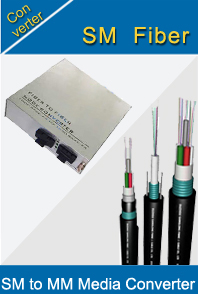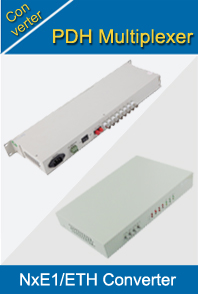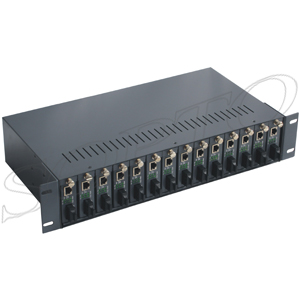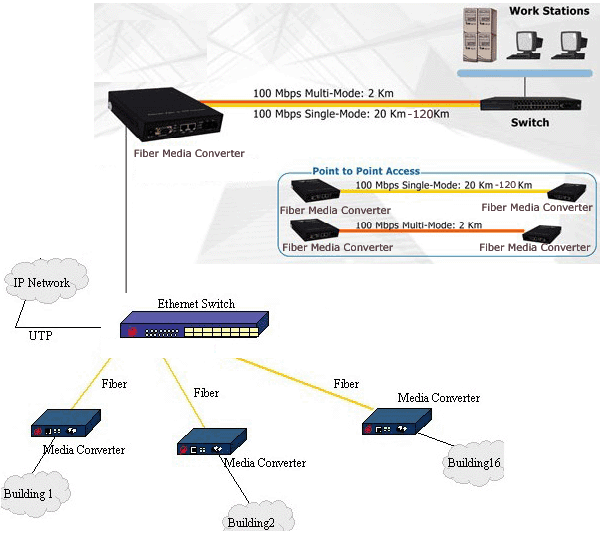-

- Sopto Home
-

- Special Topic
-

- Converter Knowledge
-

- Introduction of Ethernet to Fiber Optic Converters
Converter Knowledge
- Form Factors and Application of Ethernet Media Converter
- Ethernet over 4 E1 Converter Brief Introduction
- What is the Difference between RS232 and RS485 Serial Interfaces
- What is the Difference between RS232 and RS485 Serial Interfaces
- How to Convert an Analog Telephone to VoIP Protocol?
- How to Find the Internet Protocol Address and Media Access Contr
- How to Convert from Fast Ethernet to Fiber Optics?
- How to Connect a Fiber Converter?
- How to Convert Ethernet to Fiber Media Converters?
SOPTO Special Topic
Certificate



Guarantee
Except products belongs to Bargain Shop section, all products are warranted by SOPTO only to purchasers for resale or for use in business or original equipment manufacturer, against defects in workmanship or materials under normal use (consumables, normal tear and wear excluded) for one year after date of purchase from SOPTO, unless otherwise stated...
Return Policies
Defective products will be accepted for exchange, at our discretion, within 14 days from receipt. Buyer might be requested to return the defective products to SOPTO for verification or authorized service location, as SOPTO designated, shipping costs prepaid. .....
Applications
An Ethernet to Fiber Media Converter can also be used where there is high level of electromagnetic interference or EMI which is a common phenomenon found in industrial plants. This interference can cause corruption of data over copper-based ethernet links. Data transmitted over fiber optic cable however is completely immune to this type of noise. An Ethernet to Fiber Optic Converter therefore enables you to inter-connect your copper-ethernet devices over fiber ensuring optimal data transmission across the plant floor.
SOPTO Products
- Fiber Optic Transceiver Module
- High Speed Cable
- Fiber Optical Cable
- Fiber Optical Patch Cords
- Splitter CWDM DWDM
- PON Solution
- FTTH Box ODF Closure
- PCI-E Network Card
- Network Cables
- Fiber Optical Adapter
- Fiber Optical Attenuator
- Fiber Media Converter
- PDH Multiplexers
- Protocol Converter
- Digital Video Multiplexer
- Fiber Optical Tools
- Compatible
Related Products
Performance Feature
Converter Knowledge
Recommended


Introduction of Ethernet to Fiber Optic Converters
Ethernet Media Converter is a device to convert and transmit Ethernet networks into Ethernet fiber optic networks. It can convert digital electric Ethernet signals to optical signals. Ethernet to fiber optic converter enable connections of UTP copper-based Ethernet equipment over a fiber optic link to take advantage of the benefits of fiber which include:
a. Extending links over greater distances using fiber optic cable
b. protecting data from noise and interference
c. Future proofing your network with additional bandwidth capacity
Copper-based Ethernet connections are limited to a data transmission distance of only 100 meters when using unshielded twisted pair (UTP) cable. By using an Ethernet to fiber conversion solution, fiber optic cabling can now be used to extend this link over a greater distance.
An Ethernet to fiber media converter can also be used where there is high level of electromagnetic interference or EMI which is a common phenomenon found in industrial plants. This interference can cause corruption of data over copper-based Ethernet links. Data transmitted over fiber optic cable however is completely immune to this type of noise. An Ethernet to fiber optic converter therefore enables you to inter-connect your copper-Ethernet devices over fiber ensuring optimal data transmission across the plant floor.

By utilizing Ethernet to fiber media converters, the benefits of fiber optic cabling can now be realized for copper-based Ethernet infrastructures. The advantages of Ethernet to Fiber Optic Converters are shown as below:
1. Protects your investment in existing copper Ethernet-based hardware
2. Provides you with the flexibility to add fiber on a port-by-port basis
3. Enjoy the benefits of fiber without have to make wholesale changes
4. Fast Ethernet or Gigabit Ethernet to multi-mode or single mode
5. Ethernet to fiber and fiber back to Ethernet links
6. Create copper-fiber connections with fiber switches
Media Converters for Ethernet fiber converter transforms the signal from a UTP/RJ45 Ethernet link to one that can be used by a fiber transceiver. Media converters can connect to various optical fiber cable such as multimode, single mode or single strand fiber cable. Options exist for many distances to suit the needs of a particular Ethernet to fiber application. And, fiber interface connectors can be dual ST, dual SC, dual LC or single SC type.
Ethernet to fiber media converter models that are best suited for enterprise and Service provider applications, offer an on-board processor that continuously monitors that both the copper and fiber connections are up. This functionality, generally referred to as “Link Pass-Through”, monitors the state of the link to the end devices and to ensure that each end-point knows whether the entire link is up or not.
Some media converter products do not have this intelligence and simply “nail up” the link even though the remote copper device may be down or the fiber link broken. With Link Pass through functionality available in all Sopto Ethernet to Fiber Optic Converters, the network’s SNMP management system can be alerted when a fault occurs so that corrective action can take place.
The most common type of Ethernet Fiber Converter is one that is a standalone device (managed or unmanaged) with its own power adapter. They convert fixed speed Fast Ethernet, Gigabit or rate converting 10/100/1000 UTP links to 100Base-FX or 1000Base-X fiber connections. Where a large density of media converters is required, chassis-based systems are also available. These rack mountable units can house up to 19 managed or unmanaged media converter modules providing redundant power for AC and 48v DC environments.
For purchasing high quality fiber media converters, or for more products’ information, please contact a Sopto representative by calling 86-755-36946668, or by sending an email to info@sopto.com.
For purchasing high quality fiber media converters, or for more products’ information, please contact a Sopto representative by calling 86-755-36946668, or by sending an email to info@sopto.com.




